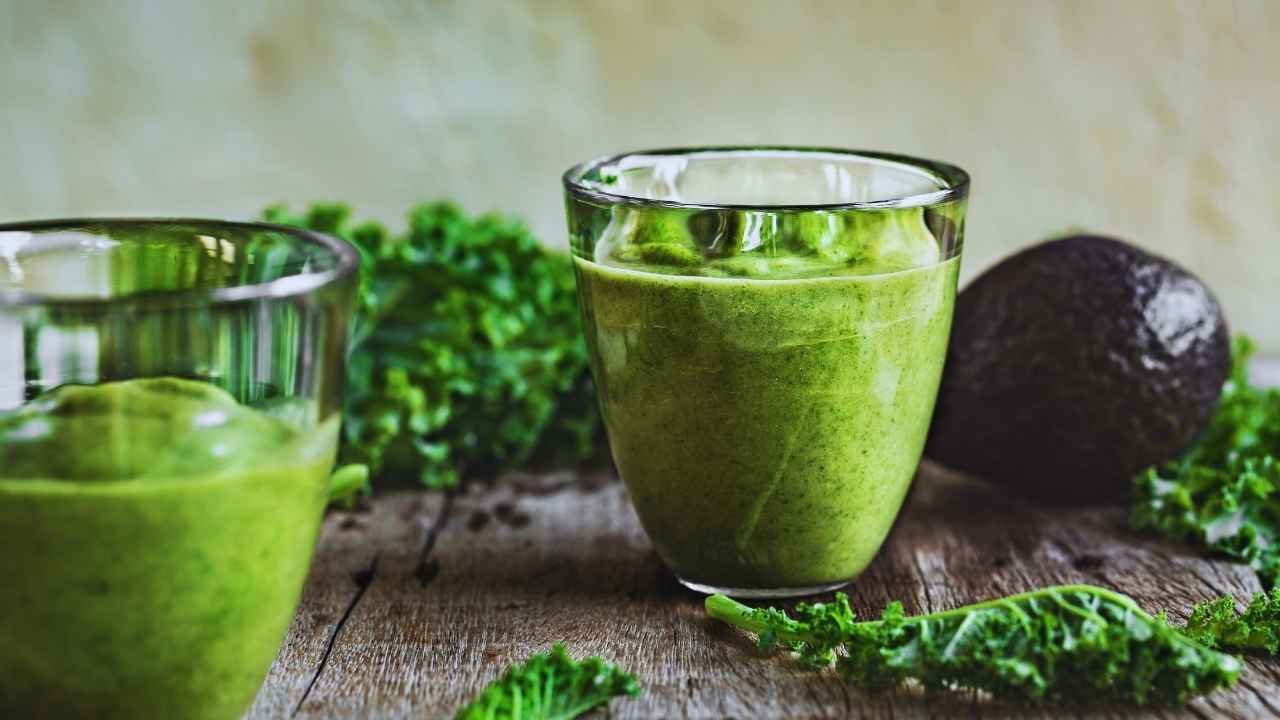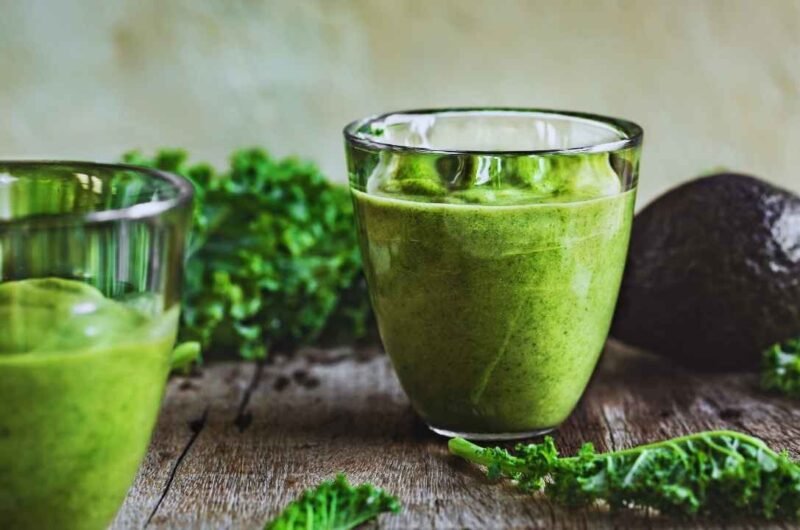How to Make a Kale and Avocado Smoothie for Inflammation Relief
Millions of people struggle with chronic inflammation and look for natural ways to feel better. A simple kale and avocado smoothie can help reduce inflammation naturally. These ingredients pack powerful anti-inflammatory properties and deliver vital nutrients your body needs.
Let me show you how to make the perfect anti-inflammatory smoothie with fresh kale and ripe avocados. You’ll discover the best ways to pick ingredients and blend them properly. The recipe has exact measurements and blending techniques that make your smoothie effective and delicious. You can also add other inflammation-fighting ingredients to boost your smoothie’s benefits. This complete guide will help you create a smoothie that suits your needs.
Benefits of Kale and Avocado for Inflammation
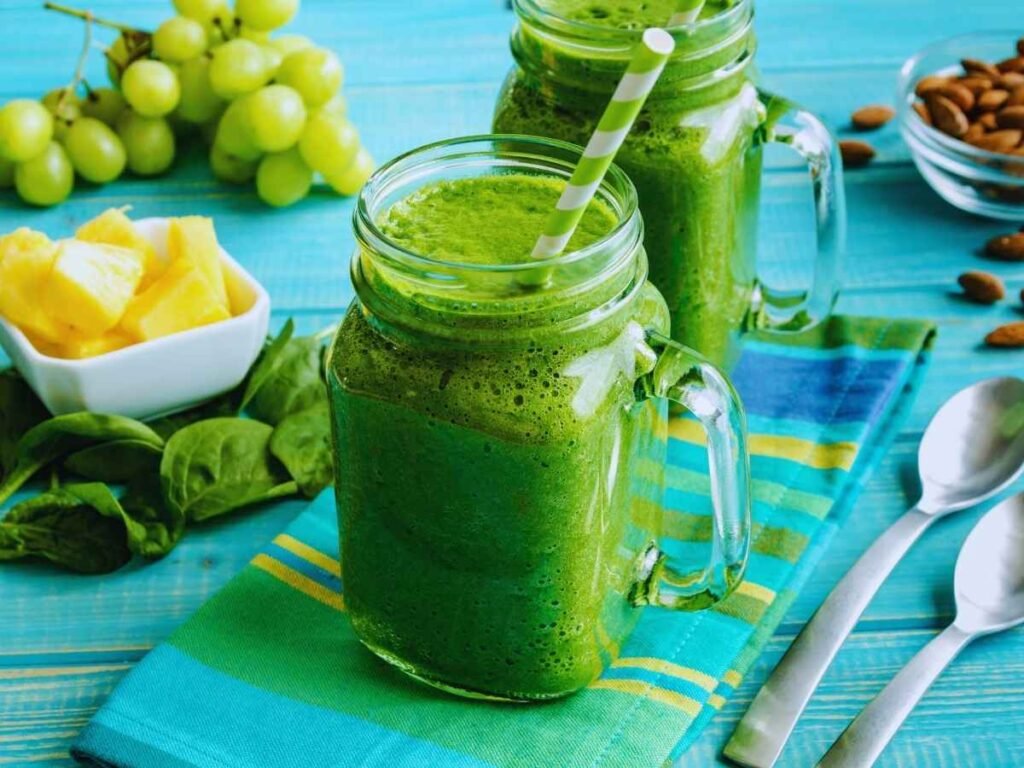
Kale and avocado work together effectively to fight inflammation with their unique nutrients and bioactive compounds. These superfoods complement each other perfectly. Scientists have learned about their individual and combined effects, making them excellent choices for reducing inflammation.
Anti-inflammatory properties of kale
Kale, “the queen of greens,” contains powerful anti-inflammatory compounds that help curb cellular inflammation. Phytochemicals and sulfur-containing glucosinolates in kale reduce inflammatory markers in the body. This remarkable green packs a rich blend of phenolic compounds that include:
- Kaempferol and quercetin (flavonoids that inhibit inflammatory responses)
- Vitamins A, C, and K (antioxidant nutrients)
- Beta-carotene and lutein (protective carotenoids)
- Omega-3 fatty acids and fiber
Scientists have discovered these compounds reduce the expression of pro-inflammatory cytokines and protect against conditions linked to chronic inflammation.
How avocados curb inflammation
Avocados pack powerful anti-inflammatory compounds. Research shows that eating avocados regularly can greatly reduce inflammatory markers in the body. A key 2019 study with 51 adults revealed that eating one Hass avocado daily for 12 weeks lowered inflammatory markers.
The fruit’s inflammation-fighting power comes from its rich carotenoids and tocopherols (vitamin E compounds). These nutrients team up to shield the body from pro-inflammatory molecules. On top of that, it contains monounsaturated fats that lower insulin resistance and keep blood sugar levels steady. These factors play a crucial role since unbalanced levels can trigger inflammation.
Mutually beneficial effects of combining kale and avocado
Eating kale and avocado together improves their anti-inflammatory benefits through better nutrient absorption. Avocado’s healthy fats boost the body’s absorption of fat-soluble nutrients from kale by up to 400%. These nutrients include vitamins K and E. The combination creates stronger anti-inflammatory effects than eating either food alone.
Their complementary nutrient profiles support the body’s natural inflammatory response. Kale delivers fiber and water-soluble vitamins. Avocado’s healthy fats and fat-soluble nutrients create an all-encompassing approach to fight inflammation. Research shows this nutrient combination reduces inflammatory markers like interleukin one beta (IL-1β) and CRP. People seeking natural inflammation relief will find this combination especially effective.
Essential Ingredients and Equipment
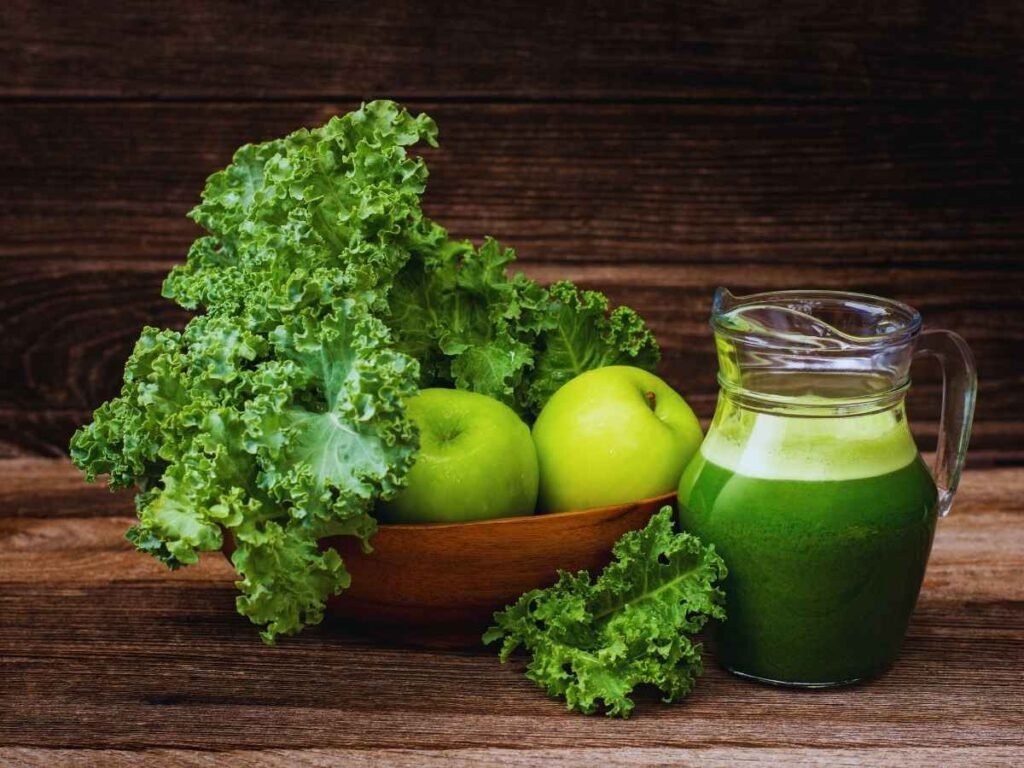
The perfect anti-inflammatory smoothie depends on two key factors: premium ingredients and proper equipment. This piece shows you how to select and prepare each component for the best results.
Choosing the right kale
Different types of kale can make great smoothies. Curly kale leads the pack as the most common choice, as it has, bringing a peppery flavor and contains plenty of nutrients. Lacinato kale’s softer texture and sweeter taste make it perfect for smoothies. This variety also goes by the name Tuscan or dinosaur kale. Baby kale works best for smoothie beginners because it has a milder taste but gives you the same nutritional goodness.
Selecting a ripe avocado
A perfect avocado makes your smoothie delicious if it yields gently to pressure without feeling mushy. You can identify ripe Hass avocados by these characteristics:
- Dark green to almost black skin with a bumpy texture
- Slight give at the time you press gently near the stem
- No deep indentations or obvious bruising
- A stem that comes off easily, revealing green underneath
Choose avocados that yield to gentle pressure if you need them right away. You can ripen firmer avocados at home by placing them in a brown paper bag with a banana or apple. The ripening process takes 1-2 days naturally.
Additional ingredients for flavor and nutrition
These complementary ingredients will boost taste and fight inflammation:
- Core ingredients:
- Fresh ginger root (adds zesty flavor and fights inflammation)
- Lemon (helps your body absorb iron from kale)
- Green apple (natural sweetness with low sugar)
- Unsweetened almond milk or other plant-based milk
- Optional boosters:
- Vanilla extract (natural sweetener without added sugar)
- Matcha powder (rich in antioxidants)
- Fresh turmeric root (powerful anti-inflammatory benefits)
Blender recommendations
It would help to have a quality blender to make smooth, creamy, anti-inflammatory smoothies. Professional-grade blenders give the best results. Several options match different needs and budgets.
High-Performance Options:
- Vitamix: Professional-grade performance with 7-10 year warranty
- Blendtec: Commercial quality with user-friendly features
- Ninja Professional: Mid-range option with excellent ice-crushing capability
The best blenders pack at least 1000 watts of power. They should have strong, sharp blades that break down fibrous kale completely. Your blender’s container should be BPA-free. A tamper tool helps push ingredients toward the blades. High-end blenders might cost more upfront, but their durability and performance make them economical solutions for people who make smoothies regularly.
Step-by-Step Smoothie Preparation
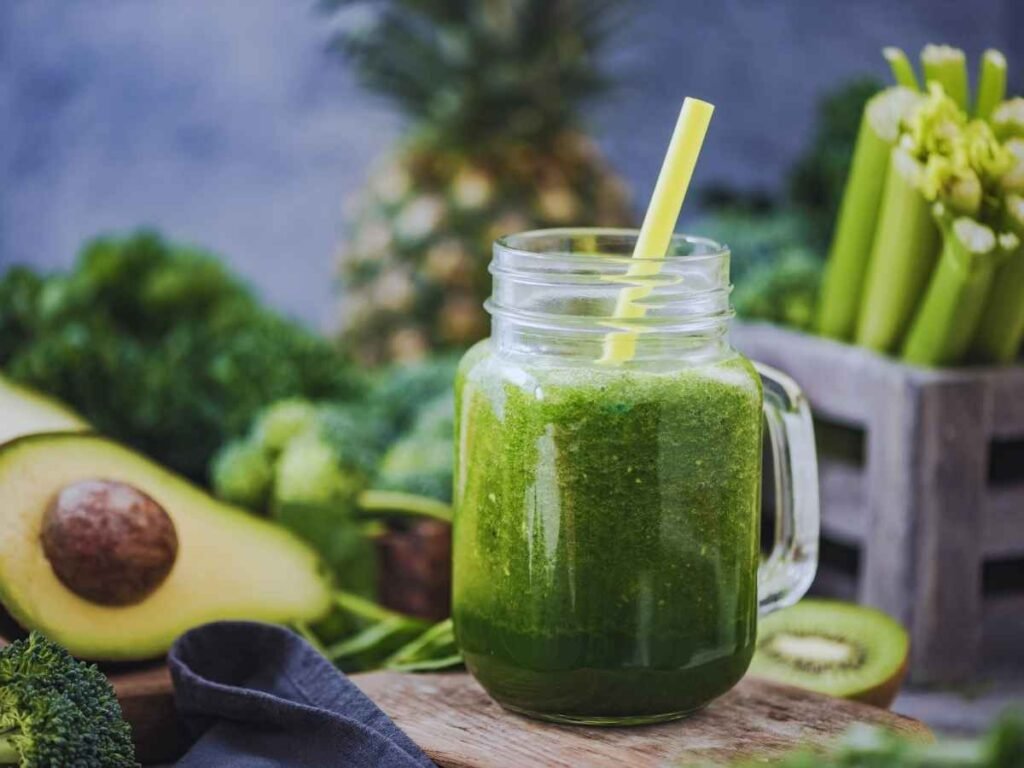
It would help if you had attention to detail and proper technique to make an anti-inflammatory smoothie that works. The right steps will give you a perfect blend of kale and avocado. These ingredients keep their inflammation-fighting properties intact when you blend them correctly.
Washing and prepping the kale
A smooth, nutritious blend starts with proper kale preparation. You need to wash the kale in cold water; a salad spinner will give the best results. Please remove the tough center stems from the kale leaves since they taste bitter and feel fibrous. Chop the kale into smaller pieces before blending. This original prep work will give a smoother consistency and better nutrient extraction.
Cutting and scooping the avocado
The proper preparation of avocados is significant to achieve a creamy texture. Take a sharp knife to cut the avocado lengthwise around the seed. The halves will separate with a gentle twist. Strike the seed carefully with your knife’s edge and twist it to remove. You can achieve the smoothest results in two ways:
- Peel back the skin in sections to preserve maximum flesh
- Use a spoon to scoop out the flesh in one piece
Blending techniques for optimal consistency
A perfectly smooth blend depends on the right sequence of ingredients. The process starts with blending kale and liquid to efficiently break down the fibrous leaves. This step becomes significant when you have a standard blender. High-speed blenders can handle all ingredients simultaneously, but the right sequence produces better results.
- Add liquid and kale to the blender
- Blend until kale turns completely liquid
- Add the avocado and remaining ingredients
- Blend on high speed until smooth and creamy
- The tamper tool helps push ingredients toward the blades when necessary
Adding liquid and other ingredients
The perfect smoothie consistency depends on the right liquid ratio to solid ingredients. Start with 1-2 cups of liquid and adjust to your preferred thickness. Cold liquids work best in smoothies. You can use water, plant-based milk, or coconut water as your base.
Your anti-inflammatory smoothie will benefit from adding ingredients in this order:
- Frozen fruits will help thicken the smoothie
- Fresh ginger or turmeric will boost anti-inflammatory properties
- A squeeze of fresh lemon will preserve color and boost nutrient absorption
- Ice cubes can add extra thickness if needed
Blend the smoothie on high speed for 60-90 seconds until you reach the ideal consistency. The mixture might need more liquid – add it slowly while blending. You can store your smoothie in an airtight container for up to 48 hours in the refrigerator. However, drinking it right away gives you the most benefits.
Room-temperature ingredients like avocado will create the smoothest texture in your smoothie. Frozen elements help achieve thickness without reducing the smoothie’s nutritional value.
Customizing Your Anti-Inflammatory Smoothie
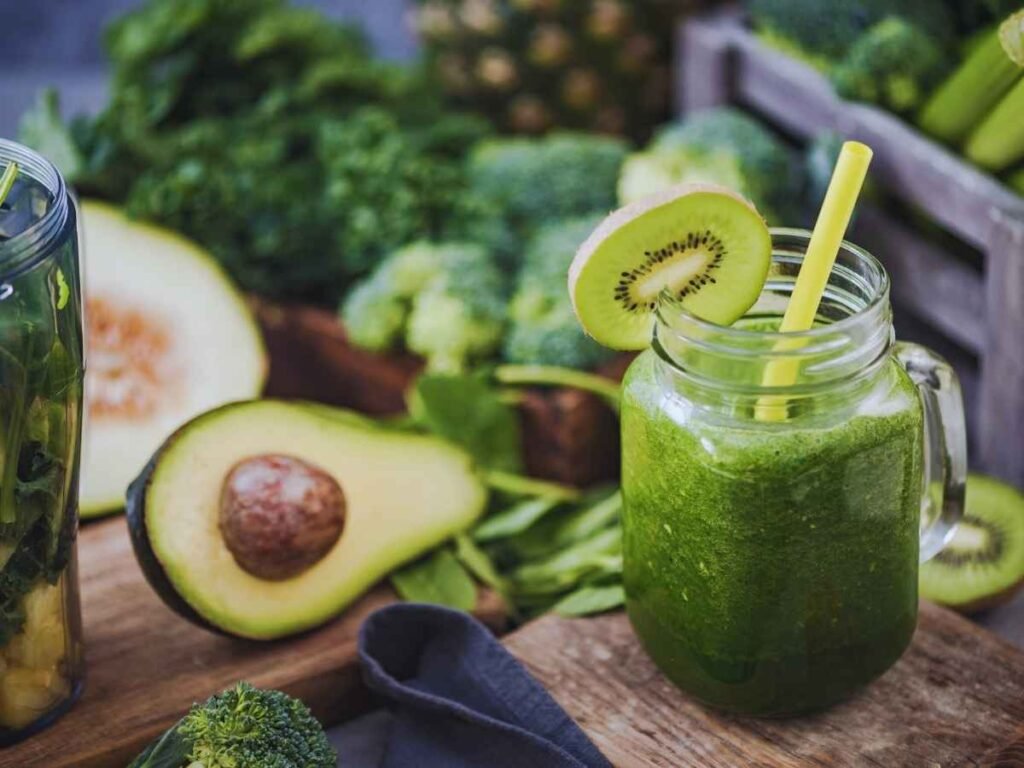
A personalized kale and avocado smoothie helps maximize anti-inflammatory benefits, matching your taste priorities and nutritional needs. The thoughtful addition of ingredients improves this healing beverage’s flavor profile and therapeutic properties.
Protein boosters to try
A protein boost in your anti-inflammatory smoothie creates a more filling and complete nutritional drink. These protein options work perfectly with the basic kale and avocado smoothie and preserve its anti-inflammatory qualities:
Protein Source Amount Benefits Chia Seeds 2 tablespoons 6g protein, rich in ALA omega-3s Hemp Seeds 1.5 tablespoons 5g protein, complete amino acids Walnuts 1/4 cup 4g protein, inflammation-fighting omega-3s Plant-based Protein 1 scoop 20-25g protein, digestive enzymes Superfoods to incorporate
Adding superfoods will boost your smoothie’s anti-inflammatory properties by a lot. These powerful additions work together with kale and avocado to create amazing results:
- Spirulina: 1 tablespoon provides 4g protein and potent anti-inflammatory compounds
- Cacao nibs: 3 tablespoons offer 4g of protein and antioxidants
- Ground flax seeds: 2 tablespoons contain omega-3s and fiber
- Turmeric root: Fresh or powdered form with black pepper for absorption
- Ginger: Fresh root adds warmth and reduces inflammation
Natural sweetener options
Your smoothie’s health benefits depend on selecting natural sweeteners that do not trigger inflammation. Raw honey emerges as nature’s anti-inflammatory sweetener and provides natural antiseptic and antibacterial properties. People who watch their blood sugar levels can use stevia, a zero-glycemic alternative that tastes 30-50 times sweeter than traditional sugar.
Here are the best options to sweeten your smoothie with recommended amounts:
- Raw honey: 2 tablespoons maximum
- Medjool dates: 2-3 pieces for natural sweetness
- Stevia: 1 teaspoon of powder
- Pure maple syrup: 1-2 tablespoons
Adjusting flavors and thickness
You can modify your anti-inflammatory smoothie’s consistency and taste based on your preferences while keeping its healing properties intact. Several methods help achieve the right thickness adjustments:
Your smoothie becomes thicker with:
- Frozen banana chunks (1/2 banana)
- Greek yogurt (1/2 cup)
- Chia seeds (allow to soak for 10 minutes)
- Uncooked oats (2-3 tablespoons)
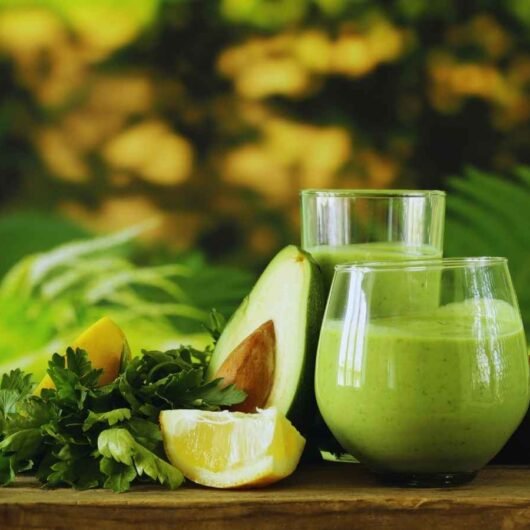
Natural ingredients improve flavor without losing benefits:
- Vanilla extract adds natural sweetness
- Cinnamon brings warmth and helps regulate blood sugar
- Fresh herbs like mint or basil create brightness
- Citrus zest deepens flavor without added sugar
Different liquid bases change your smoothie’s character:
- Oat milk creates extra creaminess
- Cashew milk adds richness
- Coconut water provides electrolytes
- Green tea gives an antioxidant boost
Your smoothie customization should balance the Fab 4 components: protein, fiber, fat, and greens. This powerful combination stabilizes blood sugar levels and releases energy steadily. Each ingredient you add should taste great and support the smoothie’s anti-inflammatory properties.
How to Make a Kale and Avocado Smoothie for Inflammation Relief
Course: DrinksCuisine: AmericanDifficulty: Easy1
servings5
minutes220
kcalThis Kale and Avocado Smoothie is a powerhouse of anti-inflammatory nutrients designed to promote well-being. Packed with kale’s antioxidants and avocado’s healthy fats, this creamy blend is delicious and a natural way to fight inflammation. Customizable with superfoods like ginger, turmeric, or matcha, this smoothie is a perfect addition to your daily health routine.
Ingredients
1 cup kale leaves (washed, stems removed)
1/2 ripe avocado
1 cup unsweetened almond milk (or preferred liquid)
1/2 green apple (sliced)
1 tsp fresh ginger (grated)
1/2 lemon (juiced)
1-2 ice cubes (optional)
Directions
- Prepare Ingredients: Wash and de-stem the kale. Slice the avocado and scoop out the flesh.
- Blend Greens First: Add kale and almond milk to the blender. Blend until smooth.
- Add Remaining Ingredients: Add avocado, green apple, ginger, lemon juice, and ice cubes.
- Blend Smoothly: Blend on high speed until the mixture is creamy and smooth.
- Serve Fresh: Pour into a glass and enjoy immediately for maximum freshness and benefits.
Recipe Video
Notes
- To maximize the anti-inflammatory benefits, use fresh, high-quality ingredients and consume the smoothie immediately after preparation to preserve its nutrients. If you have specific dietary restrictions or health conditions, consult a nutritionist before significantly changing your diet.
Conclusion
Kale and avocado smoothies work as a natural remedy to fight inflammation because their nutrients complement each other and absorb better together. The right ingredients and proper blending methods boost these benefits. Simple produce becomes a powerful anti-inflammatory drink. These superfoods work together to amplify their healing properties when combined carefully. This gives you a practical way to manage inflammation through your daily diet.
You can customize this healing smoothie to match your taste while keeping its health benefits intact. Adding superfoods, protein boosters, and natural sweeteners helps create your perfect blend. The smoothie’s anti-inflammatory properties remain strong. Your simple food choices can reshape your health and well-being through whole-food nutrition.
FAQs
Is it beneficial to have a kale smoothie every day?
Yes, incorporating kale into your daily smoothie can be helpful as it increases your intake of essential nutrients such as iron and vitamin K, which are abundant in kale.
Do I need to cook kale before adding it to a smoothie?
No, cooking kale before using it in a smoothie is unnecessary. Kale can be consumed raw, and while it has a strong flavor, it is effectively balanced by the other ingredients in the smoothie.
What health benefits does a kale smoothie provide?
A kale smoothie is rich in minerals like calcium, which is crucial for cellular functions and bone health, and magnesium, which helps prevent type 2 diabetes and heart disease. Kale also offers a good amount of potassium, which is important for heart health.
Is it advisable to drink an avocado smoothie in the morning?
Yes, consuming an avocado smoothie in the morning can be very beneficial. Avocados are nutrient-dense, providing healthy fats, particularly monounsaturated fats, which support heart health.

